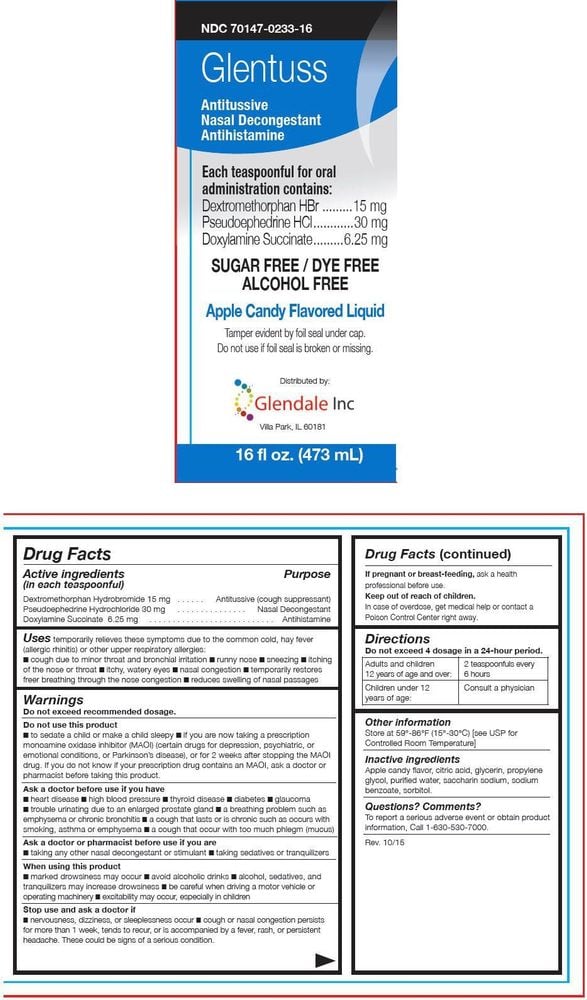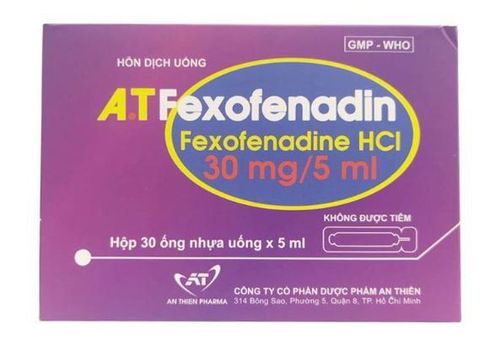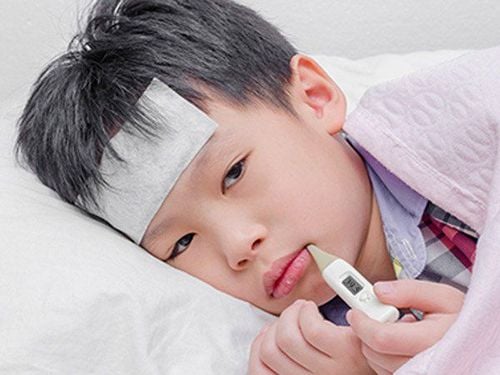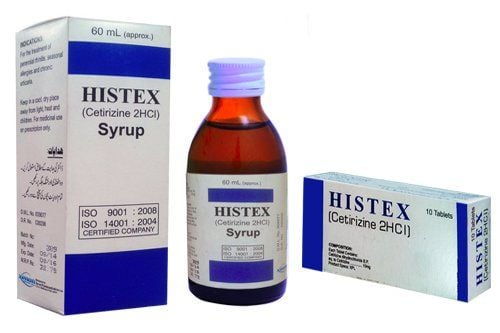This is an automatically translated article.
Glentuss is used to treat symptoms caused by colds, hay fever, allergies and some other respiratory diseases. To ensure effective treatment and avoid side effects of Glentuss, patients should read the instructions carefully before using or as prescribed by a doctor.
1. What does Glentuss do?
Glentuss is a combination medicine commonly used to treat symptoms caused by colds, flu, hay fever, allergies or respiratory conditions such as bronchitis, sinusitis. The Glentuss group of drugs includes:
Dextromethorphan is a cough suppressant by affecting a certain part of the brain (cough processing center) and reducing the sensation of coughing. Decongestants help to clear the nasal cavity and relieve symptoms of nasal congestion. Antihistamines reduce tearing; itchy eyes, nose and throat; runny nose, sneezing. Currently, Glentuss combination medicines used to treat colds have not been shown to be safe or effective in children under 6 years of age. Therefore, do not give Glentuss combination medicine to children under 6 years of age, unless specifically directed by your doctor.
Some long-acting tablets/capsules are not recommended for use in children under 12 years of age, so consult your doctor before use.
In some cases, Glentuss combination medicine does not completely cure or shorten the symptoms of a cold, and can even cause serious side effects. Therefore, to reduce the risk of side effects, users should:
Follow carefully the dosing instructions for Glentuss. Do not use Glentuss just to make your child drowsy. Do not arbitrarily combine cough and cold medicines that contain similar ingredients. Check out other ways to relieve cough and cold symptoms, such as using a humidifier, drinking enough fluids, nasal sprays, and saline nasal drops.
2. Dosage and way of taking Glentuss
If you are taking an over-the-counter medication, read all directions on the package before using it. For prescription Glentuss, users should take with a glass of water about 240 ml or as directed by a doctor. If you are prone to stomach upset, Glentuss can be taken with food or milk.
How to use the forms of Glentuss medicine as follows:
If you are using Glentuss liquid, shake the bottle well and use a special tool or spoon to get the right amount of medicine. Swallow the tablet whole if you are taking Glentuss extended-release capsule, do not crush or chew the tablet to avoid the risk of side effects. For Glentuss combined chewable tablets, you should chew the medicine thoroughly before swallowing. If you are taking Glentuss powder, mix it thoroughly with the appropriate amount of liquid and stir well. Drink the entire liquid immediately, do not preserve or store for later drinking. The dosage of Glentuss can be adjusted, changed, or directed by your doctor based on each patient's medical condition, age, gender and response to treatment. Therefore, if you are taking Glentuss to treat signs of allergies or hay fever, use it exactly as directed to increase its effectiveness.
Improper use or abuse of Glentuss can lead to serious harm such as brain damage, seizures, and death. Therefore, patients should not arbitrarily increase the dose or use Glentuss more often or for longer than directed. In addition, users should inform their doctor if symptoms persist or tend to worsen.

Thuốc Glentuss có thể được bác sĩ điều chỉnh, thay đổi dựa trên tình trạng sức khỏe và đáp ứng điều trị của mỗi bệnh nhân.
3. Undesirable effects when using Glentuss
In addition to the therapeutic effect, using Glentuss can lead to unwanted effects. The side effects of Glentuss include:
Dizziness, headache, drowsiness, blurred vision; Abdominal pain, nausea, constipation; Dry mouth, nose, throat and mucus in the lungs thicken, making it difficult to breathe. To alleviate these symptoms, you can drink plenty of water, suck on hard candy, sugar-free gum, or shaved ice to relieve dry mouth; Tell your doctor right away if you have signs of confusion, hallucinations, ringing in your ears, trouble urinating, weakness, easy bruising and bleeding, irregular heartbeat, seizures.
4. Caution when taking Glentuss
When using Glentuss, the patient should note the following:
If you are allergic to the ingredients of Glentuss or any other condition, notify your doctor immediately. Before using Glentuss, tell your doctor or pharmacist your history of allergic reactions to breathing problems (emphysema, asthma); diabetes ; Heart; High Blood Pressure ; eyes (glaucoma); liver; kidney; convulsions; stomach ulcers and problems with urination (urinary retention, difficulty urinating due to an enlarged prostate) or an overactive thyroid (hyperthyroidism). Glentuss medicine can cause drowsiness, patients absolutely do not drive, operate machinery or do anything that requires alertness. If possible, patients should limit alcohol while using Glentuss. Glentuss may contain Aspartame, so if you have phenylketonuria (PKU) or any condition that requires you to limit your intake of Aspartame and Phenylalanin, consult your doctor before use. Elderly people are more susceptible to Glentuss side effects such as dizziness, drowsiness, mood swings, constipation, difficulty urinating, fast heartbeat, or changes in blood pressure. Children may also be more sensitive to the side effects of antihistamines, and they may be agitated, excited instead of drowsy. For women who are pregnant and breastfeeding, use Glentuss only when absolutely necessary and consult your doctor before use.
5. Glentuss . drug interactions
MAO inhibitors such as Isocarboxazid, Methylene Blue, Moclobemide, Phenelzine, Procarbazine, Safinamide, Rasagiline, Selegiline or Tranylcypromine...) if used together with Glentuss can cause serious drug interactions, even death for patient. In general, MAO inhibitors should not be used 2 weeks before and after treatment with Glentuss.
Some drugs that may react with Glentuss include: Topical antihistamines (Diphenhydramine cream, ointment, spray); beta-blockers (Atenolol, Metoprolol); antispasmodics (Belladonna extract, Atropine); medicine for Parkinson's disease (Trihexyphenidyl); Guanethidine; certain inhaled anesthetics; Methyldopa; Scopolamine; Rolapitant and tricyclic antidepressants (Amitriptyline, Desipramine).
Tell your doctor or pharmacist if you are taking other products that cause drowsiness such as: Opioid pain relievers; cough suppressants (Hydrocodone, Codeine); muscle relaxants (Carisoprodol, Cyclobenzaprine); alcohol; marijuana; sleeping pills; an anxiety medicine (Alprazolam, Zolpidem, Lorazepam) or another antihistamine (Diphenhydramine, Cetirizine).
In particular, some ingredients contained in the drugs will affect the user's heart rate or blood pressure. Therefore, tell your doctor if you are using such drugs or products.
6. Some notes when using Glentuss
When using Glentuss, the patient should note the following:
If Glentuss overdose and symptoms such as fainting or difficulty breathing, take the patient to the emergency room immediately. Some signs of Glentuss overdose include: agitation, body hot flashes, hallucinations, confusion, dilated pupils, convulsions, loss of coordination, drowsiness, loss of consciousness. If you forget to take a dose of Glentuss, you should take it as soon as you remember, if it is almost time for your next dose, skip the missed dose, do not take a double dose to catch up with your treatment. Glentuss may affect the results of certain tests, such as brain scans for signs of Parkinson's disease, urine drug screening tests, and allergy tests. Therefore, if you are taking Glentuss, please inform your doctor or healthcare provider before taking the test. Store Glentuss in an airtight container at room temperature (15-30 degrees Celsius), away from light and moisture, and do not freeze the liquid form of the drug. In summary, to ensure the effectiveness of treatment and avoid side effects of Glentuss, patients should read the instructions carefully before using or follow the instructions of the doctor or pharmacist. In case the use of Glentuss is not effective, the patient should go to the medical facility for examination and treatment.
Please dial HOTLINE for more information or register for an appointment HERE. Download MyVinmec app to make appointments faster and to manage your bookings easily.
Reference source: Webmd.com













